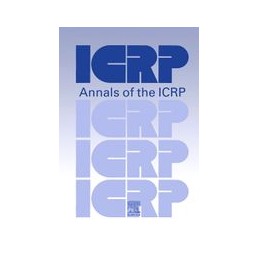- Reduced price

Order to parcel locker

easy pay


 Delivery policy
Delivery policy
Choose Paczkomat Inpost, Orlen Paczka, DHL, DPD or Poczta Polska. Click for more details
 Security policy
Security policy
Pay with a quick bank transfer, payment card or cash on delivery. Click for more details
 Return policy
Return policy
If you are a consumer, you can return the goods within 14 days. Click for more details
In its latest Recommendations for a System of Radiological Protection, the Commission considered it necessary and appropriate to broaden its scope in order to address, directly, the subject of protection of the environment, even though it acknowledged that there is no simple or single universal definition of environmental protection, and that the concept differs from country to country, and from one circumstance to another.
The Commission also stated, however, that it believed that its approach to environmental protection should be both commensurate with the overall level of risk (and thus optimized), and that it should be compatible with other approaches being made to protect the environment. Some form of numerical guidance is therefore necessary, and the Commission said that it considered that such guidance - built on a knowledge of the relationships between exposure and dose, between dose and effect, and between effect and possible consequences - needed to be based on a sound scientific system similar to that which had been developed for human protection, and that this could best be achieved by way of the creation of a set of Reference Animals and Plants.
This report therefore introduces the concept of Reference Animals and Plants and defines a small set of them. It discusses their pathways of exposure and It collates and discusses the adequacy of the best available data relating to their dosimetry at different stages of their life cycle, and further develops and uses this information to derive sets of tabulated data (Dose Conversion Factors, in terms of µGy day-1 per Bq kg-1) that allow the dose to be calculated for 75 radionuclides that may be within, or external to, each organism.
It then reviews what is known about the effects of radiation upon such biotic types (or of organisms similar to them, where more precise data are lacking) with regard to the effects of mortality, morbidity, reduced reproductive success, and chromosomal damage. Drawing on this information, the report then derives a set of Derived Consideration Reference Levels (DCRLs) for each biotic type in order to help optimise the level of effort that might be expended on the environmental protection of them, or to similar types of organisms, and thus serve as points of reference in any wider consideration of what authorities may wish to do under different exposure situations. The various factors that should be taken into account when considering what to do if such DCRLs are likely to be attained is also briefly discussed.
Some broader background information on the types of animals and plants used is also given, together with a review of what is known about radiation effects on such types of biota generally. Additional information is provided on advice with regard to extrapolating and interpolating the limited set of dosimetric models to other shapes and sizes of animals and plants.
The Commission acknowledges that in many circumstances exposure to radiation is but one factor to consider. It therefore intends to provide high-level guidance and advice upon which regulators and operators may draw in order to demonstrate compliance, where necessary, with the wide range of international and national environmental legislation that already exists, or is likely to emerge in the near future. It also intends to supplement this introductory report with additional relevant data sets, and with further guidance on such issues as radiation weighting factors.
Key words:: environmental protection, Reference Animals and Plants.
Data sheet
Abstract Guest Editorial Preface Executive Summary Glossary 1. Introduction 2. Reference Animals and Plants 3. Iteroparous, hermaphrodite, high fecundity, population number > 10000 4. Calculation of dose conversion factors for reference animals and plants 5. The effects of radiation and its relevance to Reference animals and plants 6. Assessing effects in terms of derived consideration reference levels 7. Applications and Extrapolations 8. Conclusions Annex A. Biological background to the reference animals and plants Annex B. Comparison of dosimetric methods Annex C. Dose conversion factors Annex D:: radiation effects in reference animals and plants Annex E. Extrapolation and interpolation of basic dosimety assumptions to other shapes and sizes of animals and plants
Reference: 104270
Author: Sharmila Dorbala
